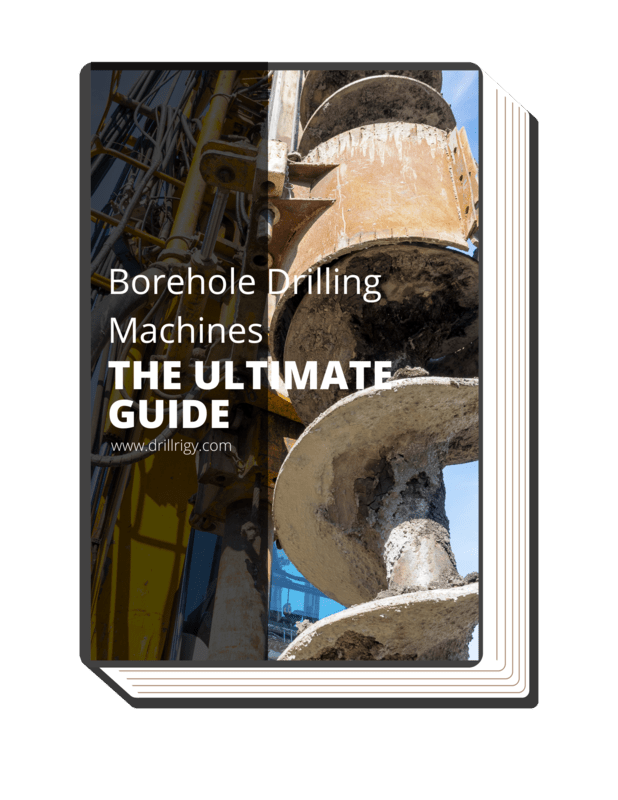A deafening roar, a cloud of dust, and suddenly the earth gives way to an intricate network of tunnels beneath. This isn’t a scene from a sci-fi movie, but an everyday spectacle for industries involved in mineral extraction, oil, and gas drilling or groundwater exploration. But have you ever wondered about the technology behind this feat? The question, begging to be addressed here, is “What is rotary drilling?”
Rotary drilling is a method used widely in the drilling industry, deploying a sharp, rotating drill bit to cut into the earth. Whether it’s to reach valuable resources like oil and natural gas, or to probe subterranean depths for scientific research, rotary drilling has become an indispensable tool in various sectors.
In this guide, we’ll take a deep dive into the world of rotary drilling, unpacking its mechanisms, applications, and its crucial role in modern-day industries.
Read on, as we drill down into the nitty-gritty of rotary drilling.
1. Understanding Rotary Drilling Fundamentals
Defining Rotary Drilling
Rotary drilling is a well-digging method that involves a rotating drill bit that crushes the earth’s crust, enabling the extraction of valuable resources beneath the surface. It’s a widely recognized process used mainly for deep well drilling such as oil wells, gas wells, or even water boreholes. I believe this method revolutionized the drilling industry, significantly increasing the efficiency and depth of drilling operations.
How Does Rotary Drilling Work?
Rotary drilling is a preferred method in the drilling industry, especially when strength and depth are essential for a project. This technique involves the use of a sharp, rotating drill bit that applies downward pressure to cut or crush through different types of lithology. The drill bit, attached to a drill pipe, rapidly rotates and bores into the rock formation.
Depending on the substrate’s competency, the drilling process may utilize roller-cone bits or fixed cutter bits. Rotary drilling provides the capability to advance through both hard and soft lithology, allowing for larger diameter boreholes and reaching greater depths compared to other drilling methods. Understanding the benefits and versatility of rotary drilling is crucial in achieving efficient and successful drilling projects.
2.Types of Rotary Drilling Rigs
Drilling operations may vary based on the location, the depth of the borehole, or the nature of the ground formation. To cater to these variances, the drilling industry offers different types of rotary drilling rigs. See the following details below:
Conventional Rotary Drilling Rig
The conventional rotary drilling rig is perhaps the most commonly known. It employs kelly, a square or hexagonal pipe, to transfer rotary motion and downward thrust to the drill bit.
Advantages:
- It is a well-established and widely used system with proven reliability.
- It allows for drilling to great depths.
- The system is simple and straightforward to operate.
- It is flexible in terms of drill bit selection, which can be easily swapped depending on the ground conditions.
- Maintenance is relatively easy due to the simplicity of its components.
Disadvantages:
- The process of adding or removing drill pipes can be time-consuming.
- It requires a high level of manual labor, which could pose safety risks.
- The drilling efficiency might be affected when dealing with hard rock formations.
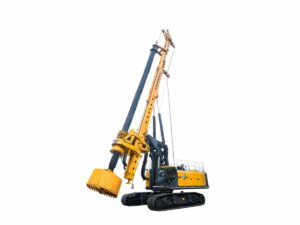
Top Drive Drilling Rig
Top drive drilling rigs have a motor that is located at the top of the drill string, providing rotation directly to it. Speaking from experience, this improves drilling speed and reduces the time required to add additional drill pipes.
Advantages:
- It enhances the overall drilling efficiency and reduces drilling time.
- It allows for longer sections of the drill pipe to be added, thereby reducing the number of connections.
- It provides better control over the drilling process.
- It improves safety as the need for manual labor is significantly reduced.
- It has a smaller footprint which allows for more working space on the drilling floor.
Disadvantages:
- It is significantly more expensive than conventional drilling rigs.
- It requires highly skilled personnel to operate.
- The maintenance costs can be high due to the complex nature of its components.
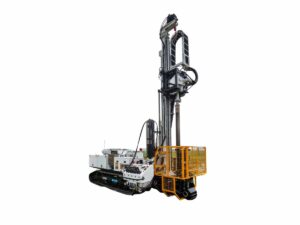
Automated Drilling Rig
Automated drilling rigs are the future of drilling. They utilize advanced technology to automate many processes which were previously manual, such as adding drill pipes or monitoring drilling parameters.
Advantages:
- It increases the speed and efficiency of drilling operations.
- It improves safety by reducing the need for manual intervention.
- It provides precise control over drilling parameters, enhancing the quality of drilling.
- It reduces downtime as it can operate continuously without breaks.
- The data gathered can be analyzed to optimize future drilling operations.
Disadvantages:
- It has high initial costs.
- It requires a sophisticated level of expertise to operate and maintain.
- It may face difficulties in unusual or unpredictable drilling conditions.
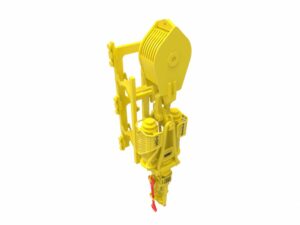
Mobile Drilling Rig
Mobile drilling rigs are designed to be easily transported from one location to another. I have seen they are suitable for exploration projects or situations where multiple wells are drilled in different locations over a short period.
Advantages:
- It offers quick and easy relocation, saving valuable time and resources.
- It reduces the costs associated with transporting heavy equipment.
- It allows for drilling in remote or hard-to-reach areas.
- It can be customized to fit different drilling needs.
- It enables fast setup and takedown times.
Disadvantages:
- It may have limitations in drilling depth compared to larger, stationary rigs.
- It requires a flat, stable surface for operation.
- It might not be as robust or durable as stationary drilling rigs.
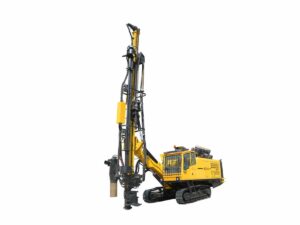
3. Key Components of Rotary Drilling
Rotary drilling is a complex process that involves various components each playing a vital role in the drilling operation. For better comprehension, these components are classified, see below the key points:
Drill Bit
The drill bit is the primary tool used in rotary drilling. Its purpose is to break up the rock formations in order to create a borehole. It’s attached to the end of the drill string and rotates as the rotary system is activated. The rotation and the weight applied to it helps it to grind, crush or cut the rock at the bottom of the hole. On a personal note, the variety of drill bits available in the market is fascinating.
Drill Pipe
A long, hollow, thick-walled pipe that connects the drill bit to the surface equipment is the drill pipe. It provides a conduit for the drilling fluid and also transmits the rotational force from the rotary table or top drive to the drill bit. It’s worth noting that the strength and quality of the drill pipe play a crucial role in the efficiency and safety of a drilling operation.
Rotary Table
According to IntelliDrives, a rotary table is a precision device that is ideal for work positioning. Such a table is used in metal works as it makes the job of drilling easier for the metal worker. It is usually driven by an electric motor through a set of gears, allowing for adjustable speeds. In traditional rotary drilling, the rotary table turns the kelly and the attached drill string.
Hoisting System
The hoisting system performs the heavy lifting on the drilling rig. It’s responsible for raising, lowering, and suspending the drill string, as well as lifting casing and tubing for installation into the well. One of my most vivid experiences in the field was seeing the hoisting system in operation for the first time.
Circulating System
The circulating system in rotary drilling is designed to circulate drilling fluids or mud. The primary purpose of this system is to cool the drill bit, carry cuttings to the surface, control formation pressures, and maintain the stability of the wellbore.
4.Drilling Operations and Procedures
Drilling a well involves several operations and procedures, which are executed in a certain sequence to ensure the safety and success of the drilling operation. Here are the vital steps to explore:
Step #1 Rig Setup and Site Preparation
Rig setup and site preparation are the first steps in the drilling process. This involves selecting a suitable site, setting up the drilling rig and related equipment, and preparing the site to manage potential environmental and safety issues.
Step #2 Drilling Fluids and Mud Management
Drilling fluids, also known as drilling mud, play a crucial role in drilling operations. They are used to cool and lubricate the drill bit, carry drill cuttings to the surface, control formation pressures, and maintain the stability of the wellbore. Proper management of these fluids, including their composition and properties, is essential for the efficiency of the drilling operation.
Step #3 Drilling Fluid Circulation
The circulating system in rotary drilling is responsible for circulating the drilling fluids or mud. The fluid is pumped down the drill string, out through the drill bit, and then returns to the surface carrying the drill cuttings. The drilling fluid is then cleaned and conditioned before it’s pumped back down the wellbore.
Step #4 Drilling the Wellbore
Drilling the wellbore involves the actual drilling process. This is where the drill bit, drill pipe, rotary system, hoisting system, and circulating system come into play. The drill bit grinds, crushes, or cuts the rock at the bottom of the hole, creating a borehole. The drill cuttings are then carried to the surface by the circulating drilling fluid.
Step #5 Casing and Cementing
I have learned that once the desired depth has been reached, the wellbore is reinforced with a steel pipe called a casing. The casing is placed in the wellbore and cemented in place to prevent the well from collapsing and to isolate the different formations penetrated by the wellbore.
Step #6 Well Completion and Production
Well Completion and Production involves a meticulous set of steps, starting with precise good placement and drilling efficiency, to ensure the production of high-quality wells. Essentially, the process aims not just to position the well accurately within the target but also to ensure the wellbore quality, which can impact later completions and the overall success of a project.
5. Applications of Rotary Drilling
In the sphere of drilling, the innovation of rotary drilling has transformed the way to explore and extract resources from the Earth’s crust. The rotary drilling method, which employs a spinning drill bit to cut a circular cross-section in solid materials, is now at the core of numerous applications. Here are some points to take note of.
Oil and Gas Exploration
Employing a tool, sometimes referred to as a rock bit, rotary drilling provides an efficient method to discover and extract hydrocarbons such as crude oil and natural gas. Given the incredible depth that oil and gas deposits often lie in, the technique is exceptionally useful, with boreholes ranging from 1,000 feet to over 30,000 feet.
Geothermal Drilling
Geothermal energy is heat derived below the Earth’s crust, which can be harnessed for power generation or direct heating purposes. Rotary drilling allows for the efficient drilling of deep wells to access this underground heat. It’s a technological breakthrough that brings the dream of sustainable, green energy to life.
Water Well Drilling
Moving on to a more fundamental necessity, rotary drilling plays an essential role in water well drilling. Providing access to groundwater for drinking, irrigation, or industrial use is vital. Thanks to the efficiency of rotary drilling, the process of creating these wells is significantly streamlined.
Mining Exploration
Another area where rotary drilling is integral is mining exploration. Mineral and metal deposits are often located deep within the Earth. Rotary drilling, given its ability to drill deep and precise boreholes, serves as a robust technique for mining exploration. It paves the way for resource assessment and extraction, contributing significantly to the mining industry.
Construction and Foundation Drilling
Certainly not least, the construction industry reaps the benefits of rotary drilling. Whether it’s building foundations, creating retaining walls, or installing utility lines, rotary drilling provides a reliable and efficient means of creating necessary holes. This method is particularly crucial in urban settings where precision and speed are paramount.
6. Rotary Drilling vs. Other Drilling Methods
Rotary drilling and other drilling methods are used in various industries, including mining, oil and gas exploration, environmental and geotechnical drilling, water well drilling, and more. Here’s a comprehensive comparison of rotary drilling with other drilling methods. See the following details below:
Percussive Drilling vs. Rotary Drilling
- I believe percussive drilling is the oldest method, where a chisel-type tool strikes the rock at short intervals to chip away and form a circular hole. The tool is rotated slightly between blows.
- Rotary drilling, on the other hand, uses a rotational drill bit to penetrate the rock. It provides power, versatility, and the ability to advance through hard and soft lithologies.
Conventional Rotary Drilling vs. New Drilling Methods
- Conventional rotary drilling, introduced in the early 1900s, is the most widely used method for drilling oil wells. It has seen improvements in equipment and techniques over the years.
- New drilling methods have been developed to supplement or replace rotary drilling due to its recognized limitations. These methods aim to increase rates of penetration and decrease drilling costs per foot of the hole.
Advantages of Rotary Drilling
- Strength: Rotary methods are effective for advancing through both hard and soft lithology.
- Depth & Diameter: Rotary drilling is capable of drilling larger diameter boreholes and achieving greater depths compared to some other methods.
| Advantage |
Description |
| Deep Drilling Capability |
Rotary drilling can reach great depths, often several kilometers, making it suitable for deep oil, gas, and geothermal wells. |
| High Penetration Rate |
It can drill more quickly than many other drilling methods, which saves time. |
| Wide Borehole Diameter |
Rotary drilling can create boreholes with a wide range of diameters. |
| Versatility |
It can be used to drill in a variety of substrates, from very soft to very hard rock. |
| Well Control |
The use of drilling mud in rotary drilling helps control pressure and reduce the risk of blowouts. |
| Accurate |
Provides straight and accurate boreholes, which are essential in oil and gas operations. |
| Sampling Capability |
It allows for continuous coring and the retrieval of undisturbed samples. |
| Adaptability |
Different drill bits can be used to adapt to the type of rock formation being drilled. |
| Cost-Effective |
For deep drilling operations, rotary drilling can be more cost-effective than other methods due to its high drilling rate.
|
Rotary Crushing vs. Rotary Cutting
- Rotary Crushing: In my experience, I have seen this method involves high-point loading to the rock from three cones, and it is effective in medium to hard rocks.
- Rotary Cutting: This method utilizes shear force from drag bits and is suitable for drilling small boreholes in soft rocks.
7. Safety Considerations in Rotary Drilling
Adherence to safety measures is not just about ensuring the well-being of the workers on the rig, but also about maintaining the integrity of the entire operation. In such a high-risk environment, where the drilling rig is continuously exposed to potentially harmful conditions, even a minor oversight can result in significant accidents. Here are some significant aspects to remember:
Ensuring Worker Safety on the Rig
Rig workers are exposed to a range of occupational hazards, including the risk of physical injury from heavy machinery, potential chemical exposures, and challenging weather conditions. Based on my experience, strict adherence to safety guidelines, combined with regular safety training and effective personal protective equipment, can dramatically mitigate these risks.
Well Control and Blowout Prevention
The consequences of a well control failure can be disastrous, both in terms of human safety and environmental impact. This makes well control and blowout prevention integral parts of any drilling operation. Regular inspection of blowout preventers, strict adherence to well control protocols, and continuous monitoring of pressure levels within the well are pivotal to preventing such calamities.
Emergency Response Procedures
Despite the best safety measures, unforeseen incidents can still occur in the drilling environment. Hence, having robust emergency response procedures in place is non-negotiable. These procedures should cover possible scenarios such as fires, blowouts, or hazardous chemical spills. Drills and mock exercises should be conducted regularly to ensure that all personnel are well-versed.
Occupational Hazards and Risk Mitigation
The nature of the drilling environment exposes workers to a variety of occupational hazards. These can range from physical risks associated with operating heavy machinery to health risks arising from exposure to harmful substances. Mitigation strategies might include regular health check-ups, adequate training in handling hazardous substances, and the use of appropriate personal protective equipment.
8. Challenges and Innovations in Rotary Drilling
While the rotary drilling industry has come a long way, it still faces several challenges. Extreme drilling conditions, environmental concerns, and cost constraints are some of the significant hurdles. However, alongside these challenges, the sector has also witnessed a series of technological advancements. See the following below:
Challenges
Extreme Drilling Conditions
Drilling operations are often conducted in some of the most challenging environments on earth, from the frigid Arctic to the intense heat of desert regions. Drilling equipment must withstand these conditions without compromising on safety or efficiency. Moreover, the physical and mental well-being of workers in such extreme environments is also a significant concern that needs continuous attention.
Environmental Considerations
Drilling operations invariably interact with the environment, often leading to concerns about pollution and ecosystem disruption. Strict regulations and the increasing public demand for environmentally friendly practices add to the challenge. Consequently, companies need to invest in techniques and equipment that minimize environmental impact.
Cost and Time Constraints
In the drilling industry, time is money. Delays due to equipment failure, safety incidents, or unexpected drilling conditions can have a substantial financial impact. As such, finding ways to increase efficiency while reducing downtime is an ongoing challenge. For example, Drillrigy, as a renowned borehole drilling machine manufacturer, continuously strives to enhance its products’ reliability and efficiency.
Innovations and Technological Advancements
Directional Drilling
One significant advancement that has revolutionized the drilling industry is the advent of directional drilling. This technique enables operators to direct the drill bit along non-vertical paths, allowing multiple wells to be drilled from a single location. The resultant reduction in environmental footprint and cost-efficiency has made directional drilling a standard in the industry.
Rotary Steerable Systems
Rotary steerable systems are an advanced form of directional drilling technology. They allow precise steering of the drill bit while rotating, enhancing drilling speed and control. This improved control enables the drilling of longer and more complex wells, thereby increasing production rates.
Automated Drilling Systems
Automated drilling systems represent the integration of artificial intelligence with drilling operations. These systems can monitor and adjust drilling parameters in real time, improving efficiency and reducing human error. As a result, automated systems can significantly enhance safety and productivity in drilling operations.
Advanced Drill Bit Designs
Improvements in drill bit design also contribute to increased drilling efficiency. For example, the use of more durable materials and the development of bit designs optimized for specific drilling conditions can significantly enhance drilling speed and extend bit life.
Dive Deeper Into Our Resources
Looking for more diverse product options? Browse through our handpicked selections:
Still haven’t found what you’re looking for? Don’t hesitate to contact us. We’re available around the clock to assist you.
Conclusion
Having delved into the fundamentals of rotary drilling, it becomes clear that this technique plays an integral role in the drilling industry. One could ponder upon the question, “How might the adoption of advanced rotary drilling methods propel one’s operations to new heights of efficiency and productivity?” An interesting thought to mull over for businesses in the drilling sector.
For any queries, or concerns, or for more information on rotary drilling, please do not hesitate to reach out to our team. Empowering businesses with knowledge and the right drilling solutions is the priority. So take a step forward and reach out today at Drillrigy and experience a prominent borehole drilling machine and rotary drilling difference. Contact us today!




